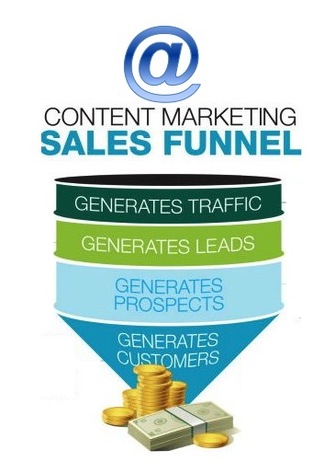
With $469B in revenues, Walmart ranks first in the Fortune 500 above Exxon Mobil, and yet its online revenues only account for 1-2% of its total sales: $4.9B in 2011, and expecting $9B in 2012.
Compare that to Amazon $50B online revenues and 200 million SKUs (vs. 2 million for Walmart). It’s high time for Walmart to shift its strategy and go all-in digital commerce or incur the risk of being slowly eaten away by Amazon. Walmart is in a unique position with its 4,000 centers (vs. Amazon 40 warehouses). These stores can be leveraged as fulfillment hubs and enable same day delivery and accommodate for “ store pick-up”: features that will be hard for Amazon to replicate.
As ‘Good to Great’ author Jim Collins suggests with its hedgehog concept or Charles Duhigg in his book ‘The power of habit’ with its “keystone” habit: companies that are chasing too many rabbits end up failing. Strategy is about picking the ONE thing the company needs to be good at. The customers have moved online and mobile, digital commerce is a no-brainer and Walmart should probably re-align its organization accordingly with this new reality.
Let’s Walmart the once, premier in supply chain efficiency figures the logistic of running Walmart as a new e-commerce company.
~~~~~~~~~~~~~~~~~~~~~~~~~~~~~~~~~~~~~~~~~~~~~~~~~~~~~~~~~~~~~~~~~~
Wal-Mart outlines its e-commerce priorities
Expansion in key markets, technology development and fulfillment are all on the to-do list.
By Kevin Woodward
Internet retailer
03/19/2013
International expansion, a new technology platform and an improved fulfillment network are top e-commerce priorities for Wal-Mart Stores Inc., the retailer outlined at the Bank of America Merrill Lynch 2013 Consumer & Retailer Conference.
Wal-Mart, No. 4 in the Internet Retailer Top 500 guide, expects to generate $9 billion in global e-commercerevenue in its current fiscal year, ending Jan. 31, 2014. In February, Wal-Mart’s Neil Ashe, president and CEO of global e-commerce, said e-commerce revenue growth was “accelerating and ahead of our plans.”
In 2011, Wal-Mart’s U.S. e-commerce sales totaled an Internet Retailer-estimated $4.9 billion, up nearly 20% from $4.1 billion the prior year. In comparison, Amazon.com Inc., No. 1 in the Top 500, had $48.08 billion in sales.
“We’ve got three clear priorities for e-commerce, and the first is to penetrate and expand in key markets,” Charles M. Holley Jr., executive vice president and chief financial officer said last week at the Bank of America event. “We have a very solid foundation of e-commerce in the United States and United Kingdom. We have a new and exciting platform of growth in China, and we have a very fast-growing business in Brazil.” Sales were healthy in Brazil last year, he said, with expectations for the same this year. He did not disclose sales figures for Brazil.
In 2012, Wal-Mart raised its stake to 51% in Yihaodian, a China-based e-retailer that sells more than 180,000 products. The deal gives Wal-Mart “a very strong foothold in the markets that can only be matched by the U.S. in terms of potential,” Holley said.
Another priority is to develop Pangaea, Wal-Mart’s global technology platform, Holley said.
Read full article here
Compare that to Amazon $50B online revenues and 200 million SKUs (vs. 2 million for Walmart). It’s high time for Walmart to shift its strategy and go all-in digital commerce or incur the risk of being slowly eaten away by Amazon. Walmart is in a unique position with its 4,000 centers (vs. Amazon 40 warehouses). These stores can be leveraged as fulfillment hubs and enable same day delivery and accommodate for “ store pick-up”: features that will be hard for Amazon to replicate.
As ‘Good to Great’ author Jim Collins suggests with its hedgehog concept or Charles Duhigg in his book ‘The power of habit’ with its “keystone” habit: companies that are chasing too many rabbits end up failing. Strategy is about picking the ONE thing the company needs to be good at. The customers have moved online and mobile, digital commerce is a no-brainer and Walmart should probably re-align its organization accordingly with this new reality.
Let’s Walmart the once, premier in supply chain efficiency figures the logistic of running Walmart as a new e-commerce company.
~~~~~~~~~~~~~~~~~~~~~~~~~~~~~~~~~~~~~~~~~~~~~~~~~~~~~~~~~~~~~~~~~~
Wal-Mart outlines its e-commerce priorities
Expansion in key markets, technology development and fulfillment are all on the to-do list.
By Kevin Woodward
Internet retailer
03/19/2013
International expansion, a new technology platform and an improved fulfillment network are top e-commerce priorities for Wal-Mart Stores Inc., the retailer outlined at the Bank of America Merrill Lynch 2013 Consumer & Retailer Conference.
Wal-Mart, No. 4 in the Internet Retailer Top 500 guide, expects to generate $9 billion in global e-commercerevenue in its current fiscal year, ending Jan. 31, 2014. In February, Wal-Mart’s Neil Ashe, president and CEO of global e-commerce, said e-commerce revenue growth was “accelerating and ahead of our plans.”
In 2011, Wal-Mart’s U.S. e-commerce sales totaled an Internet Retailer-estimated $4.9 billion, up nearly 20% from $4.1 billion the prior year. In comparison, Amazon.com Inc., No. 1 in the Top 500, had $48.08 billion in sales.
“We’ve got three clear priorities for e-commerce, and the first is to penetrate and expand in key markets,” Charles M. Holley Jr., executive vice president and chief financial officer said last week at the Bank of America event. “We have a very solid foundation of e-commerce in the United States and United Kingdom. We have a new and exciting platform of growth in China, and we have a very fast-growing business in Brazil.” Sales were healthy in Brazil last year, he said, with expectations for the same this year. He did not disclose sales figures for Brazil.
In 2012, Wal-Mart raised its stake to 51% in Yihaodian, a China-based e-retailer that sells more than 180,000 products. The deal gives Wal-Mart “a very strong foothold in the markets that can only be matched by the U.S. in terms of potential,” Holley said.
Another priority is to develop Pangaea, Wal-Mart’s global technology platform, Holley said.
Read full article here


 RSS Feed
RSS Feed